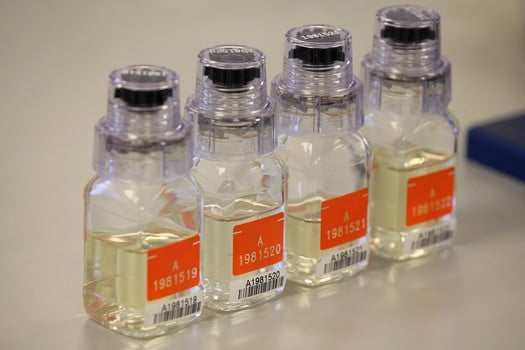Last Updated on January 22, 2024
There is nothing more frustrating – no, infuriating – to a natural bodybuilder than finding out that someone who is rumored to have failed a drug test with another organization has – or will be – competing against you in a contest sanctioned by the organization in which you are competing. It is bad enough that they think they have to cheat to win but, worse, they are allowed to get away with it with total impunity. How is this possible?
Well, the reality is that – with the exception of the ABA/INBA/PNBA which openly posts the names of drug cheats on its “Wall of Shame” for the whole world to see – natural organizations do not share their drug test results with each other, so nobody ever knows – for sure – when someone gets caught cheating. This is an open invitation to cheaters to continue their fraud against the sport and against those athletes who play by the rules. And, why shouldn’t they as long as they are never exposed? They have learned how to “game” the system without even trying.
This lack of transparency often leads to rumors of who might have cheated – or not. The rumors are sometimes “leaked” by organization heads or contest promoters (after all, no one else knows the results, right?) who feel guilty for not disclosing the names of the cheaters but hesitate to make any public pronouncement, so they float rumors to get the word out covertly. The cheaters might be discretely banned from competing again with that particular organization, but no one else usually knows about it except by the rumor grapevine. On the other hand, sometimes people simply put two and two together when they see athletes no longer competing with an organization where they have been successful but suddenly start competing with a rival organization.
The rumor mill sometimes rightfully “outs” some athletes as cheaters but others are falsely branded as cheaters because they “look too good to be natural anyway.” That’s the problem with rumors and why clarity is necessary for the sport. The natural organizations need to begin exposing cheaters (after they have been allowed the right to challenge their test results) and sharing drug test results with other organizations.
If organizations don’t feel confident enough about the validity of their test results to share them, then there must be something wrong with their testing protocol. If they simply don’t want to expose the cheaters for who they are, shame on them for hiding this blatant offense against natural bodybuilding and protecting the perpetrators who make it necessary to test in the first place.
Many cheaters also manage to slide by for a long time without getting caught (and sometimes never get caught) – regardless of the organization – because of the inherent shortcomings in the testing itself.
All of the natural organizations are currently using urine testing to detect violations of their respective banned substance lists. Urine testing is, of course, the “gold standard” for drug testing but IF – and ONLY if – the proper protocol is followed with regard to collection, chain of custody, and testing procedures.
Most organizations typically use “witness collections” where someone actually “witnesses” the collection of the urine sample from each competitor to prevent “positive” subjects from substituting or adulterating their urine, resulting in “false negative” results. (Yes, some cheaters actually resort to using someone else’s urine to pass a “whiz” test.) However, some organizations are lax in their witnessing protocol (and the cheaters usually know which ones they are), allowing the cheaters to beat the system. The bottom line is that if a witness designated by the contest promoter didn’t see you pee, it isn’t yours.
The alternative to the witness collection would be a certified digital temperature measurement (96-99 degrees to preclude contaminated or substituted samples), but it is more expensive. A combination of witnessed collection and digital temperature measurement would provide the greatest reliability with less chance of human error.
Chain of custody is probably the most difficult things to control with urine testing because the more contests sanctioned by an organization and the more different promoters and their deputies are entrusted with management of the samples (often numbering in the hundreds for even one contest) before the samples are actually delivered to the testing lab. This is where many mistakes can most often happen without very stringent controls in place. How is the status of each urine specimen monitored from collection to delivery without being compromised? It is called chain of “custody” for a reason.
The testing laboratories used by the different organizations are generally very competent, but readers may recall how, in 2006, Lance Armstrong’s urine sample from the 1999 Tour de France was “mishandled” by the laboratory allowing Armstrong to temporarily hang on to one of his Tour de France titles until 2012 when the proverbial s**t hit the fan. This demonstrates that, even at the final level, there is still the possibility of human error.
The biggest problem with urine testing? Would-be cheaters can clear many banned substances from their system just weeks prior to a contest such that the violation is not be detected in the urine – and they know it. It is also possible for would-be cheaters to “mask” certain banned substances with other “agents” so that their violation cannot be detected.
One solution to this would be random off-season testing since detection of any drug by urine testing is always subject to timing and dosage. Given enough time, cheaters can usually clear their system of any trace of banned substances, but if they are only provided 24-hour notice to be tested, they would not have time to clear any drugs they may have been using, and 24 hours is usually enough time to detect most drugs regardless of any attempts at deception. Without random testing, athletes can flagrantly use whatever banned substances they want without getting caught – and many do.
Polygraph
The polygraph has also been an important weapon in the arsenal against banned substances over the years. However, it has morphed into an abbreviated version that has lost most of its “teeth.” It does serve as somewhat of a deterrent – especially for first-time would-be cheaters – but it can often be beaten in its present form by anyone knowledgeable about how a polygraph works because it does not include the critical pre and post test interview processes mandated by the American Polygraph Association for acceptance in a court of law. A full polygraph (minimum 90 minutes) is up to 96% accurate and, if administered randomly prior to each contest and administered to all of the class winners after each contest, would definitely weed out more cheaters.
Ridding the drug cheaters from our midst is a constant challenge, but with greater cooperation among the natural organizations and continuing improvements in testing and testing protocol, cheating can be minimized which will bring greater credibility to natural bodybuilding.







